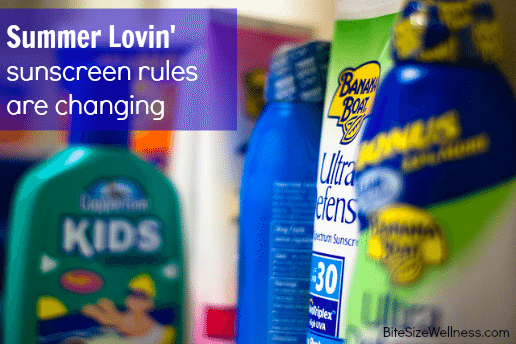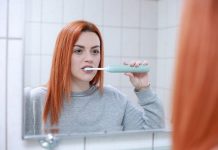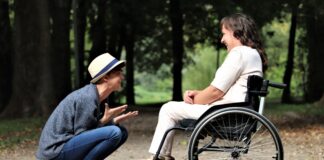Summer and sunscreen go together like peanut butter and jelly. But when you are stocking up for the season you may notice that the bottles look different thanks to new labeling rules mandated by the FDA. The new guidelines are making sunscreen more informative and sharing realistic expectations about summer skin safety with the public. The hope is that these changes will lead to less skin cancer cases during the sunny months.
What changes can you expect to see?
- One of the main modifications is that term “sunblock” is now banned because none of sunscreens can block all of the sun’s UV rays.
- You also won’t see “waterproof” listed and instead you will see the word “water-resistant.”
- All of the sunscreen bottles had to shave the amount of time the product would last so that you reapply more frequently.
- Only product that has passed a test proving that it protects against both UVA and UVB rays can list the term “broad spectrum” on the label.
- You won’t see bottles that are higher than SPF 5 since the SPF amount doesn’t increase proportionately with the degree of protection.
- You might also see bottles that have alert warnings for “skin cancer” or “skin aging” when the product doesn’t meet an SPF of higher than 15 for both UVA and UVB rays.
A lot of positive changes to our sunscreen habits are being encouraged right off the shelf. Don’t you think?
Here are some tips on how to adopt the new sunscreen rules into your sunbathing this summer:
- Look for bottles with an SPF of 15 to 50 that are labeled “broad spectrum” so you can ensure you are being protected against both UVA and UVB rays.
- Avoid sunscreen sprays as they may be banned soon as well. The concern is that enough sunscreen may not make it onto the skin.
- Opt for fragrance-free products whenever possible. The scents can bring unnecessary chemicals into the mix.
- Endorsement seals of approval aren’t as helpful as you may think. The Skin Cancer Foundation gives a “seal of recommendation” to sunscreen but only after a hefty donation has been paid.
- Even if the sunscreen seems safer, make sure you are using enough. You need at least a golf ball size dollop for adequate coverage.
- Reapply every two hours AT LEAST.
- Don’t forget about cover-ups and caps! Even if you wear an entire bottle of sunscreen you won’t be 100% protected. Covering up can help.
If the message about your sunscreen usage isn’t already drilled into your head, hopefully it is now!
What do you think about the new FDA-regulated changes on sunscreen? Share your thoughts below.
photo credit: Robert S. Donovan via photopin cc










![Daily Bite [Make]: Philly Cheesesteak Stuffed Bell Peppers](https://dashofwellness.com/wp-content/uploads/2013/01/Philly-Cheesesteak-Stuffed-Pepper-Daily-Bite-1-100x70.png)

To be completely honest… I only really use sun screen on my face. I love vitamin D… So I want to absorb that when I am in the sun. However, I also must mention that I am really not in the sun all that much. I cannot take the heat and I tend to BURN! ha!